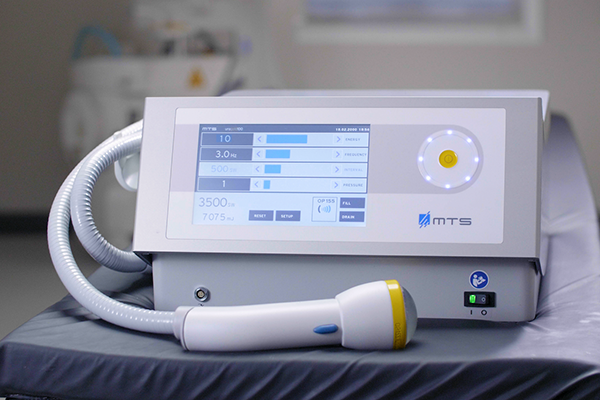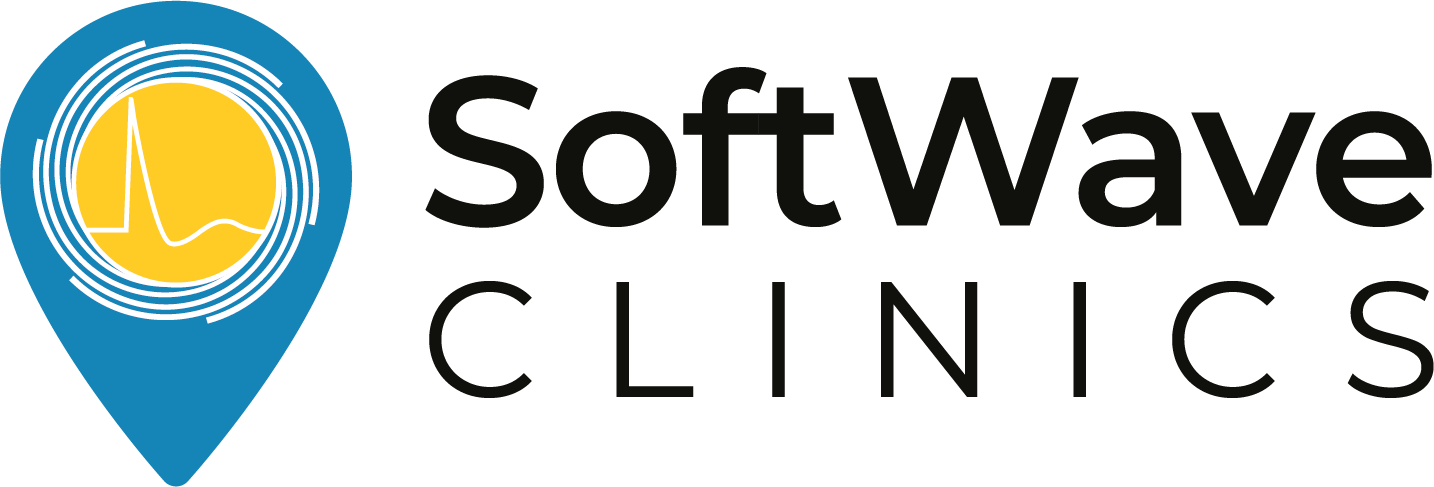Studies suggest that approximately 15-30% of chronic lower back pain cases stem from the Sacroiliac (SI) joint, showcasing its critical role in overall back health. While multiple treatment alternatives are available, not all offer satisfactory relief, prompting patients to explore more innovative methods like shockwave therapy. Emerging research reveals that shockwave therapy could be an effective way to manage SI joint pain without the expensive, often undesirable side effects of surgery or prescription drugs.
This blog post will delve into:
- Causes of SI Joint Pain
- Advantages of Shockwave Therapy for SI Joint Pain
- The Science Behind Shockwave Therapy
- Defining a Shockwave
- How do Shockwaves Alleviate SI Joint Pain?
- Different Forms of Shockwave Therapy
- Ideal Candidates for Shockwave Therapy
- The Process of Shockwave Therapy for SI Joint Pain
- Potential Side Effects of Shockwave Therapy
- The Best Shockwave Therapy for SI Joint Pain
Causes of SI Joint Pain

SI joint pain could stem from several sources, ranging from postural imbalances to more serious medical conditions. Here are some of the usual suspects:
- Muscle or ligament sprains: Unexpected movements, incorrect lifting, or overuse can result in muscle or ligament strains in the lower back, causing pain.
- Arthritis: This joint disease progressively worsens, potentially affecting the SI joint and causing pain and rigidity.
- Accidents or sporting injuries: High-impact activities, automobile accidents, and falls can lead to injuries causing SI joint pain.
- Pregnancy: Pregnancy can cause hormone-induced ligament relaxation and weight gain, both of which can increase stress on the SI joint, resulting in pain.
- Sacroiliitis: This condition involves inflammation of one or both SI joints, leading to pain in the lower back or buttocks.
- Prior spinal surgery: Past surgical procedures can sometimes contribute to SI joint pain.
It’s important to note that these are just some of the most common causes of SI joint pain. If you are experiencing SI joint pain, you can learn if your condition is suitable for treatment and try shockwave therapy with our New Patient Special.
Advantages of Shockwave Therapy for SI Joint Pain
Shockwave therapy emerges as an appealing non-invasive method for treating SI joint pain, boasting various benefits. It works by leveraging high-energy shock waves to stimulate healing in the affected region. Here are some of the potential benefits of using shockwave therapy for SI joint pain:
Quickened Healing
Shockwave therapy employs high-energy acoustic waves to activate the body’s innate healing process. As a result, it can hasten the healing of damaged tissues, including muscles and ligaments. This is particularly beneficial for those struggling with chronic or recurring SI joint pain.
Diminished Dependence on Medications
Traditional treatments for SI joint pain often involve drugs that may come with unwanted side effects. Shockwave therapy is a drug-free alternative that could reduce the reliance on pain medication or other treatments, making it a desirable option for those preferring non-pharmaceutical treatments.
Enhanced Well-Being
SI joint pain can drastically impair one’s quality of life, making daily activities and leisure pursuits challenging. Shockwave therapy can alleviate pain and improve mobility, helping patients regain their normal activities and enhance their quality of life.
Non-Invasive and Safe
Shockwave therapy doesn’t require cuts or anesthesia unlike many SI joint pain treatments and carries a minimal risk of complications, making it a fitting option for those who wish to avoid more invasive procedures.
In summary, shockwave therapy is a promising treatment alternative for those experiencing SI joint pain.
Considering Shockwave Therapy?
Try SoftWave Therapy for just $69. Non-invasive healing that reaches deeper.

The Science Behind Shockwave Therapy
Shockwave therapy is a non-invasive treatment leveraging high-energy sound waves to activate the body’s natural healing mechanism. Here’s how it operates:
Defining a Shockwave
Shockwaves are swift acoustic pulses comprising a high-pressure surge followed by a comparatively low-pressure trough. These phenomena occur regularly in our lives, produced by various events such as supersonic jets, explosions, thunder, earthquakes, or any incident causing a change in air pressure.
How do Shockwaves Alleviate SI Joint Pain?
A specialized device is used to create and safely administer shockwaves to the affected SI joint. These shockwaves can induce healing at the cellular level, enhance blood circulation, and initiate the body’s natural healing process.
Different Forms of Shockwave Therapy
While various types of shockwave therapy are available, the three most common include radial shockwave therapy (RSWT), focused shockwave therapy (FSWT), and acoustic wave therapy (AWT).
Radial Shockwave Therapy employs a hand-held instrument that delivers pressure waves to the skin’s surface. While popular for treating conditions like plantar fasciitis, Achilles tendinopathy, and tennis elbow, it may not effectively treat deep tissue injuries, and multiple treatment sessions may be required.
Focused Shockwave Therapy uses a device to deliver high-intensity shockwaves directly to the affected area. Frequently used for treating chronic conditions such as plantar fasciitis and slowly healing bone fractures, it can cause discomfort for some patients. The treatment intensity might need adjustments based on individual needs.
Acoustic Wave Therapy applies low-intensity shockwaves to the affected area, commonly used to boost blood flow, mitigate pain and inflammation, and promote tissue healing. It’s often used to address conditions such as erectile dysfunction and cellulite, but the low-intensity shockwaves may not effectively treat certain conditions.
broad-focused Shockwave Therapy uses high-intensity shockwaves that penetrate a larger and deeper tissue area than focused shockwaves or radial waves. SoftWave for hip pain is the only available broad-focused shockwave treatment in the US. It treats similar conditions to traditional focused shockwave therapy, while providing superior relief for larger joints and muscle issues such as SI joint pain. Fewer sessions may be required compared to radial or focused shockwave treatments.
Ideal Candidates for Shockwave Therapy

Some factors that may determine whether a patient is a suitable candidate for shockwave therapy include:
- Chronic SI joint pain sufferers
- Patients with limited success with other therapies
- Patients who prefer non-invasive treatment options
Chronic SI joint pain sufferers may find shockwave therapy to be a viable treatment option. This includes individuals with conditions such as degenerative disc disease, spinal stenosis, and sciatica. In instances where traditional treatments like medication and physical therapy do not provide significant relief, shockwave therapy may offer a promising alternative.
Additionally, patients who have tried other therapies with limited success may also benefit from shockwave therapy for their SI joint pain. This includes individuals who have tried multiple conservative treatment options without experiencing adequate pain relief.
For patients who prefer non-invasive treatments, shockwave therapy provides a non-surgical approach that doesn’t require cuts or anesthesia. This can make it a desirable treatment option for those wishing to avoid more invasive procedures such as spinal surgery.
The Process of Shockwave Therapy for SI Joint Pain
For those exploring shockwave therapy as a possible treatment for their SI joint pain, comprehending the process involved in this treatment method is essential. Here is a step-by-step explanation of the process:
- Getting Ready: In preparation for the procedure, the targeted area is coated with ultrasound gel. The shockwave therapy device is then carefully placed against the skin.
- During the Treatment: As the shockwaves are administered to the painful area, patients might feel a soft rhythmic tapping or pulsating sensation. Some discomfort or slight pain could be experienced, but there’s no need for anesthesia or numbing agents. A consistent dialogue between the patient and the provider is crucial to target treatment areas effectively and monitor progress.
- Post-Treatment: The procedure, which usually lasts between 10-15 minutes, doesn’t necessitate downtime for recovery. Patients can typically return to their routine activities immediately. However, some doctors might suggest refraining from vigorous movements or strenuous exercise for a period of 24-48 hours.
Potential Side Effects of Shockwave Therapy
Although shockwave therapy is generally considered safe and is well-tolerated, it does carry a minimal risk of side effects, like any other medical treatment. The most commonly reported side effects of shockwave therapy used to treat SI joint pain include:
- Slight pain or discomfort during or following the treatment
- Possible swelling or bruising
- Skin irritation or redness
- Tingling sensation or numbness
These side effects are usually mild and transitory. Most patients can get back to their regular activities immediately post-treatment.
The FDA-approved SoftWave provides a safe and effective shockwave therapy option for managing SI joint pain. Side effects related to SoftWave are minimal and non-limiting. It doesn’t lead to swelling or bruising, and any minor soreness or redness usually resolves within a couple of days.
The Best Shockwave Therapy for SI Joint Pain
Are you looking for safe, reliable, and effective relief from SI joint pain?
SoftWave therapy is FDA-cleared, patented, and nationally recognized for its leading tissue regeneration technology. Unlike other types of high-energy shockwave treatments, SoftWave is the only shockwave therapy on the market that uses true broad-focused shock waves that treat larger and deeper areas of tissue.
Thousands of patient’s have experienced the benefits of SoftWave for SI Joint pain, including:
- Little to no side effects
- Short treatment time
- Quick recovery
- Long-lasting results
Find a SoftWave Therapy provider near you or learn more about SoftWave and whether or not you’re eligible for full treatment today!
New Patient Special
Try SoftWave for just $69 at a clinic near you and learn if you’re a candidate for full treatment




